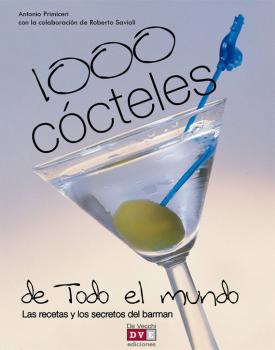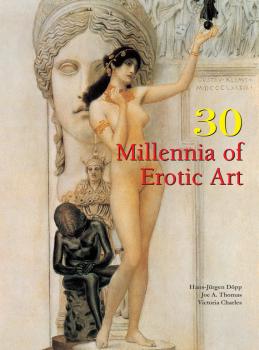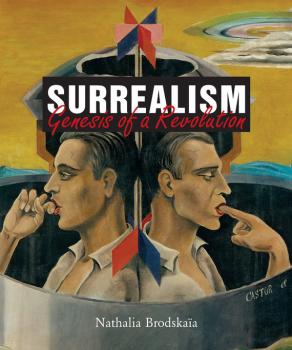Parkstone International Publishing
Все книги издательства Parkstone International Publishing30 Millennia of Sculpture
From its prehistoric origins to the conceptual modernity of the 21st century, sculpture has literally and figuratively moulded the art world. Offering an integral view at its evolution of form across civilisations and epochs, this work presents the masterpieces of sculpture that, with their timeless silhouettes, have shaped the current notion of beauty. Full of reflection on various eras, artists, and their times, this gallery in high relief presents numerous references, commentaries on works, and artist biographies. 30 Millennia of Sculpture opens the door to history and art, making it an ideal guide for both students and neophytes.
8 minutos diarios para adelgazar de abajo
¿Desea reducir peso en la mitad inferior del cuerpo? ¿Quiere equilibrar su silueta? Siga los consejos del Dr. Philippe Blanchemaison, cuyo método revolucionario conjuga un esfuerzo mínimo con una cantidad máxima de efectos. En quince días notará una pérdida de uno a tres kilos, que podrá prolongar a través de un programa de mantenimiento que se centra, principalmente, en la eliminación de la retención de agua y la acumulación de grasa celulítica.
1000 cócteles de todo el mundo. Las recetas y los secretos del barman
El tintineo del hielo en los vasos, el ritmo de la coctelera, los gestos rápidos y precisos que acompañan a la dosificación de los ingredientes, la transparencia multicolor de las bebidas, el brillo de los cristales del azúcar y la sal, el sutil aroma de la cáscara de limón… ¡cuántas sensaciones y cuánta magia hay en un cóctel! Hilo conductor y protagonista absoluto de una gran fiesta o un simple y discreto pretexto para unas charlas entre amigos o acompañando nuestros momentos de relax, con sus infinitas posibilidades de realización, un cóctel casa la cultura del bien vivir y la del bien beber. El cóctel es el fruto de la búsqueda de un perfecto equilibrio entre los diferentes ingredientes. Aunque el gran maestro de este arte es el barman, seguro que todos nosotros hemos creado alguna vez un cóctel «propio», completamente original e inspirado en un gran clásico. Ingredientes, cantidades, procedimiento, decoración, vasos… Dedicado a todos los aficionados, este es un recetario muy amplio de cócteles con y sin alcohol, refrescantes, energéticos, estimulantes, tónicos, con todas las indicaciones y sugerencias para servirlos espectacularmente y saber mezclar aromas, gustos y colores.
¿Qué hay en la tele? Cómo ayudar a nuestros hijos a elegir
La televisión alimenta las discusiones familiares. Por un lado, están los padres, que a menudo consideran que los niños la miran demasiado, incluso cuando ellos también están enganchados a la pequeña pantalla. Por el otro, están los hijos, fascinados por la cantidad de imágenes, remedio fácil contra el aburrimiento. Este libro intenta desembrollar los miedos de los padres, fundados o excesivos, y ofrece pistas para mirar la televisión de forma inteligente, ya que ésta se ha convertido en una distracción familiar ineludible. Por ello, esta obra trata de dar respuesta a cuestiones tales como: ¿Qué miran realmente los niños? ¿Qué valores transmite la televisión? ¿Cómo elegir juntos un programa? ¿Podemos juzgar sin conocer? ¿Por qué hay que establecer límites de tiempo? ¿Cómo arreglar los desperfectos si el niño ha visto una escena violenta? ¿Cómo desenganchar a alguien de la televisión? El doctor Claude Allard es psiquiatra y psicoanalista, y autor de obras enfocadas a la influencia de la televisión en nuestra vida. Cécile Dollé es periodista.
¿Psicólogo o no psicólogo? Cuándo y a quién consultar
Que se debe hacer cuando un niño tiene dificultades en la escuela o en la familia, cuando su comportamiento muestra que está sufriendo? Actualmente, la escuela, el entorno, la cultura incitan a los padres a llevar a su hijo al psicólogo o incluso a tratarlo con medicamentos, lo cual está indicado en muy pocos casos. Se hacen muchas preguntas porque se sienten responsables o incluso culpables de sus dificultades. Con ¿Psicólogo o no psicólogo? Patrick Delaroche, psiquiatra infantil y psicoanalista, responde a sus preguntas: cuándo y por qué se debe consultar al psicólogo o al psiquiatra, cómo presentarle esta visita al niño, qué terapia está justificada, por qué, en algunos casos, una sola consulta basta para que todo vuelva a la normalidad, por qué la ortofonía no sustituye a la psicoterapia, cómo se lleva a cabo un tratamiento psicológico. ¿Psicólogo o no psicólogo? ofrece a los padres los medios necesarios para reflexionar sobre el problema de su hijo y les ayuda a dar los pasos necesarios para consultar con un especialista cuando es necesario.
¿Hay que coger al bebé en brazos cuando llora? Proporcionarle tranquilidad y confianza de 0 a 2 años
Proporcionar tranquilidad al bebe es darle, desde que nace, una seguridad interior que le servira durante toda su vida. Gracias a ella, sera capaz de desarrollar sus capacidades con confianza, dirigirse a los demas, superar sus miedos, sus fracasos En resumen, hara que sea feliz de nino y de adulto. E. Rigon y M. Auffret-Pericone le ayudaran aqui a descubrir como se consigue esa sensacion basica de seguridad, y cuales son las palabras, los gestos y las actitudes que favorecen, dia a dia, su adquisicion. Las autoras responden con un lenguaje sencillo y preciso a todas las preguntas que se suelen plantear los padres, a menudo un poco agobiados por los llantos y el comportamiento de su hijo: Como ayudarle a dormirse; pulgar o chupete: que elegir?; hablarle, si, pero como?; etc.
30 Millennia of Erotic Art
From the thousand-year-old statues celebrating fertility, to the odalisques of the modern painters, erotic art has always held a prominent place in societies, whatever their morals or cultural references. This work assembles one thousand images of erotic art, from all times and all continents, to illustrate how the representation of these pleasures of the flesh testifies to the evolution of different civilisations and their histories. While eroticism abounds today in advertising and in the media, this book offers an exceptional view into the archives of erotic imagery and emphasises the artistic value of these magnificent illustrations of sin.
William Blake
Poet, draughtsman, engraver and painter, William Blake’s work is made up of several elements – Gothic art, Germanic reverie, the Bible, Milton and Shakespeare – to which were added Dante and a certain taste for linear designs, resembling geometric diagrams, and relates him to the great classical movement inspired by Winckelmann and propagated by David. This is the sole point of contact discernible between the classicism of David and English art, though furtive and indirect. Blake is the most mystic of the English painters, perhaps the only true mystic. He was ingenious in his inner imagination, and his interpretations of ancient and modern poets reveal as true and candid a spirit as the title of his first work – poems he composed, illustrated and set to music, Songs of Innocence and Songs of Experience. Later he achieved grandeur, power and profundity, especially in certain tempera paintings. Just like others, Blake was considered an eccentric by most of his contemporaries, until his genius was recognised in the second half of the nineteenth century.
Surrealism
Surrealists appeared in the aftermath of World War I with a bang: revolution of thought, creativity, and the wish to break away from the past and all that was left in ruins.This refusal to integrate into the bourgeois society was also a leitmotiv of Dada artists, and André Breton asserted that Dada does not produce perspective. Surrealism emerged amidst such feeling. Surrealists and Dada artists often changed from one movement to another.They were united by their superior intellectualism and the common goal to break free from the norm. Describing the Surrealists with their aversive resistance to the system, the author brings a new approach which strives to be relative and truthful. Provocation and cultural revolution: aren’t Surrealists after all just a direct product of creative individualism in this unsettled period?
Decorative Art
From the Middle Ages to contemporary times, decorative art can be defi ned by the artistic materials, designs and objects used in both architecture and interior design. Similar to many art forms decorative art continues to evolve, originating with pieces as simple as a chair, noted for its utility, to purely ornamental objects, celebrated for their aesthetic beauty. Decorative Art aims to eulogize these often undervalued objects by giving praise to all mediums of decorative art throughout the centuries. Originally never considered as fi ne art, their artistic potential was not acknowledged until the twentieth century when industrial production replaced artisanal creation. The age, authenticity and above all the uniqueness of these precious objects have now become the new standards of quality and beauty found in decorative art. Join us in discovering the evolution of decorative art through this enticing survey of major masterpieces throughout time.









